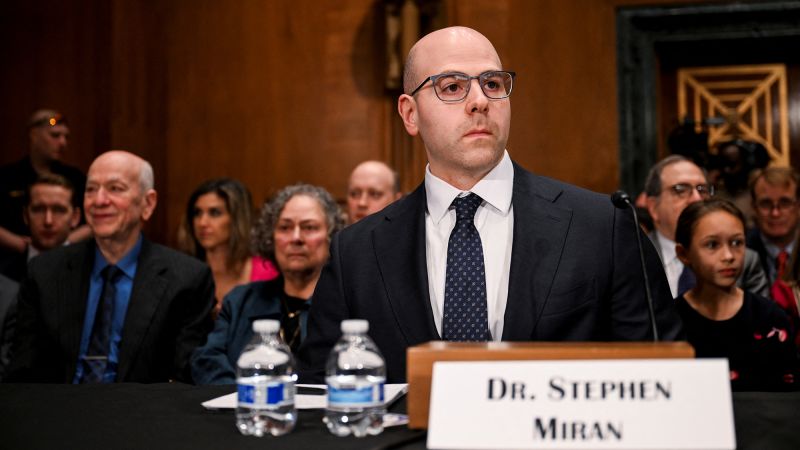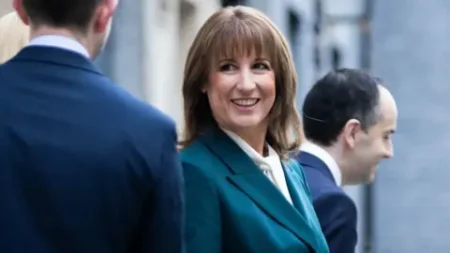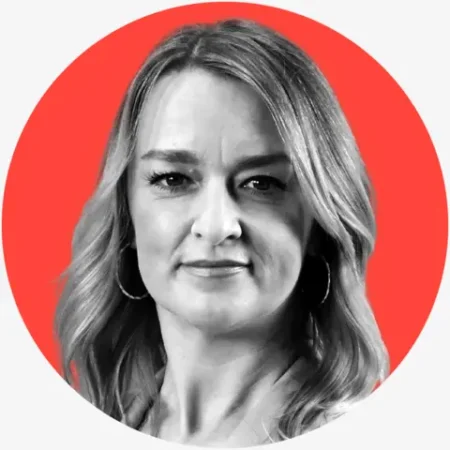In the world of American politics, Stephen Miran has emerged as a significant figure, particularly in relation to the Federal Reserve, following his nomination by President Donald Trump. Miran’s role is crucial as the economic landscape confronts a multitude of challenges and shifts. As an economist with strong ties to Trump’s administration, his nomination has garnered attention and concern, speculating what his influence might mean for the nation’s monetary policy.
Miran is characterized as a vital voice in support of Trump’s ambitious economic agenda. His nomination comes at a time when the Federal Reserve is navigating complex economic realities. The president has referred to Miran as “distinguished” and “unmatched,” suggesting that he holds him in high regard. However, the qualitative factors necessary for nomination might not be aligned with the operational dynamics required to successfully function within the Fed.
Notably, Miran has been selected for the position previously held by Adriana Kugler, who stepped down with six months remaining in her term. This situation implies that should he be confirmed by the Senate, his tenure could be quite limited, potentially ending on January 31. Given the complexities of economic policy, Miran’s distinctive views will undoubtedly be scrutinized during the upcoming confirmation hearing before the Senate Banking Committee. His approach, which tends to diverge from the consensus within the board, may present challenges to his acceptance as a Fed governor.
One distinguishing characteristic of Miran’s perspective is his belief regarding Trump’s tariffs on international trade. Most mainstream economists perceive these tariffs as a potential catalyst for inflation; however, Miran presents a counter-narrative. He asserts that these trade barriers will not lead to an inflationary surge, a stance that has been vocally supported by Trump. His confidence remains steadfast, as demonstrated in recent appearances where he stated a lack of evidence for tariff-related inflation, challenging prevailing economic fears and forecasts which predict doom and gloom as a result of such policies.
Moreover, Miran’s views do not only highlight a divergence from mainstream economic thought but also illustrate a broader ideological divide regarding the Fed’s independence. In a paper co-authored last year, he argued against the notion of an independent Federal Reserve, raising questions about the political influence that should guide monetary policy decisions. During his confirmation discussions, it remains uncertain whether he will maintain this stance, especially as he appears to have shifted position recently, emphasizing the importance of the Fed’s autonomy during interviews.
The significance of consensus-building within the Federal Reserve cannot be underestimated, particularly for a candidate like Miran who aligns more closely with Trump’s ideologies than those typically espoused by current Fed officials, including Chair Jerome Powell. As an architect of Trump’s economic strategies, Miran’s insights on tariffs and their implications for monetary policy could challenge the Fed’s traditional decision-making processes. If confirmed, he would not only have to navigate his own perceptions and critiques but also work towards creating alignment among diverse viewpoints within the Fed.
While there are numerous ramifications for Miran’s potential role, his seeming insistence on rejecting the idea that tariffs would lead to prolonged inflation places him at odds with many existing Fed narratives. Current officials have consistently pointed out that economic pressures from tariffs might affect price levels, albeit in a temporary manner. In contrast, Miran posits that such impacts are rare and compares them to extraordinary events like pandemics.
Should Miran take his place on the Fed’s Board, he will have an opportunity to present his economic theories and influence critical decisions, particularly regarding interest rates. The structure of the Fed’s decision-making process makes it imperative for him to cultivate a program of persuasion. Even as Miran holds traditional credentials as the head of the Council of Economic Advisers, his unorthodox economic views may prove to be a double-edged sword.
Overall, Miran’s nomination introduces a potentially contentious dynamic to the Federal Reserve, causing observers to contemplate the broader implications for U.S. economic policy in an increasingly polarized political climate. As he navigates his confirmation process, the central question remains: how will his approach impact the Fed, and can he indeed reconcile his views with those of his future colleagues? The coming months will undoubtedly provide clearer insights into both his intentions and the practicalities of executing economic policy.











